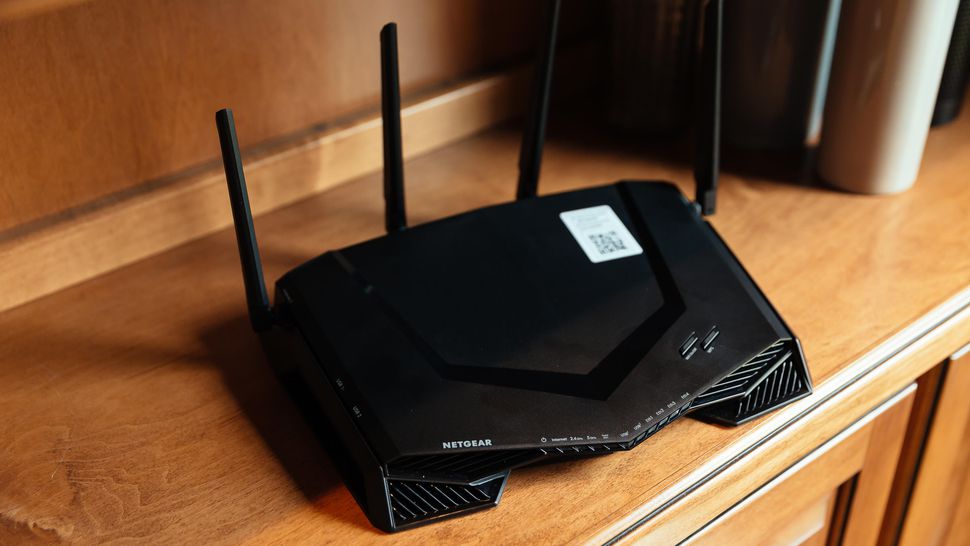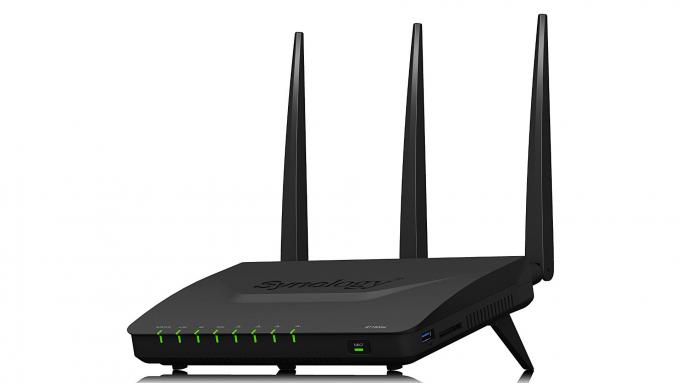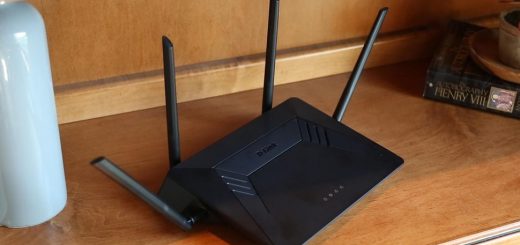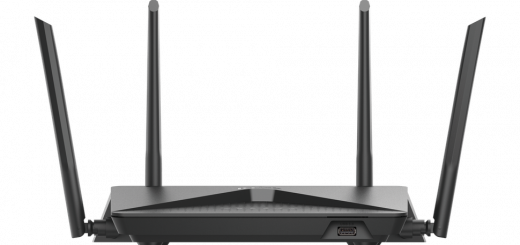Netgear Nighthawk Pro Gaming XR500 review: This router gives gamers complete control
Netgear’s Nighthawk XR500 Pro Gaming Wi-Fi router is built for gamers who want to customize their experience and gain complete control of their home network. The menu is powered by UK-based NetDumas’s DumaOS and gives gamers all the tools and analytics they need to minimize latency and keep their games running smoothly. With geofiltering you can even set a radius from your location to ensure that you only connect with local servers and players.
The AC2600 router also offers top speeds, great Wi-Fi coverage and detailed parental controls. For $300, this router is a gamer’s dream, but everyone in your household will benefit from Netgear’s powerful hardware. It’s available now in the UK for £240 and in mid-April in Australia for AU$449.
It looks like the aliens have landed
The XR500 looks like something straight out of the show “Battlebots.” Its wide, flat design is similar to others in the Nighthawk line, but this one has sharp angles all around it. The myriad LED lights on the front are pretty bright and distracting, but you can flip a switch in back to shut them off. A wall mount option would have been nice, but the router is pretty cool looking, so displaying it on a shelf won’t be too problematic.

It has four dual-band antennas, labelled Antenna 1 (two of them), Antenna 2 or Antenna 3. Make sure you attach each one to the corresponding spot on the router or you may run into connectivity issues.
You’ll find two USB 3.0 ports conveniently located on the side for easy access. The back has four gigabit LAN ports, one gigabit WAN port, a DC port for power, a reset button, a power button and the previously mentioned switch to shut off the status lights (except for the power light) if they get annoying. The top also has a Wi-Fi on/off button and a WPS button to connect new devices.
Overall, the XR500 looks cool enough that you can keep it out in the open, which will also help your Wi-Fi coverage. And after testing it out, this router has plenty of speed no matter where you put it. More on that later.
The XR500 has similar hardware specs to the Netgear R7800 gaming router. The only major difference I see is that the XR500 has twice the flash memory, most likely because it includes the advanced gaming software from NetDuma.
Setup was easy but there’s no usable app
The Netgear XR500 was easy to set up via a web browser. After connecting the router to a modem and plugging it in, I just had to connect to the Netgear network and open a browser window.
It checked my internet speed to optimize performance and gave me an estimated bandwidth. The number was lower than the max speed promised by our internet service provider (ISP), but Netgear advised that I should go with what the router detects. Netgear also said, however, that underestimating your bandwidth means you will waste some of your available speed and overestimating bandwidth will cause some of the pro gaming features to miscalculate your traffic. If you run into problems, you can always manually change the numbers or rerun the test from the menu by going to QoS and clicking the three bars on the top left of the Anti-Bufferbloat panel.
I continued the setup by updating the router password, adding security questions and updating the network names. It was nice to have the extra security questions, which most routers don’t ask. You also have a smart connect option of giving both your 2.4GHz and 5GHz bands the same name and letting the router choose the optimal one for your devices to connect to. This band-steering feature is a good idea if you aren’t terribly router-savvy.
Finally, it automatically checked for a firmware update and asked if I wanted to install it. You should definitely do this, as many manufacturers include important security enhancements with firmware updates.
The XR500 does work with the Netgear Up app and the Netgear Genie app, but the functionality on both is sparse. You can use the Up app to set up the XR500 or other Nighthawk routers as well as manage some router functions, but not enough to be useful. The Genie app is compatible with a wider variety of Netgear products and looks similar to the Up app. Between the two, you can check your password, see which devices are connected, set up a guest network, share files and test your signal strength, but that’s about it. Unless Netgear updates them soon, I wouldn’t recommend using either one.
DumaOS is gaming control on steroids
The browser menu is a dream for anyone looking to customize their settings. NetDuma’s DumaOS gaming software provides the real features that set this router apart. When the dashboard menu first pops up, you can take a short tutorial, which I highly recommend — it’s full of helpful tips. In addition, just about every setting has a clickable question mark icon to further explain what each does. I couldn’t be happier with the experience.
There are seven features listed, called R-Apps (for Router App). Clicking on each one brings up tons of ways to customize your home network, including in-depth parental controls, gaming tools and standard network settings. Most R-Apps are related to gaming and quality of service, but you can find the regular router settings, such as wireless setup and guest network, in the one called Settings.
The gaming features are the difference maker. The fun starts with a geofilter that allows you to set a radius around your location to ensure that you connect to a nearby server. Netgear recommends that you set the maximum radius to somewhere between 311 and 1,864 miles (500 and 3,000 km). The one downside is that this works for many console games on PS4 and Xbox One ($449.98 at Amazon.com), but doesn’t work for all PC games. However, you can use “Spectating Mode” to see where they’re connected and the ping, but you can’t change it. This is because you can often choose the server through the actual game. It would have been nice to have everything controllable from the router though.
The first QoS setting is called Anti-Bufferbloat. This option lets you limit the bandwidth used by nongaming devices. You can set it up so that they’re always limited or only limited when games are being played. There’s a slider bar to customize the exact percent you want nongaming devices to be able to use. Netgear recommends you set this to about 70 percent.
Next is Bandwidth Allocation. Here you can specify how much bandwidth (both download and upload) each individual device can use. NetDuma provides a colorful, clickable chart where you can simply drag your mouse to distribute usage based on percentage.










